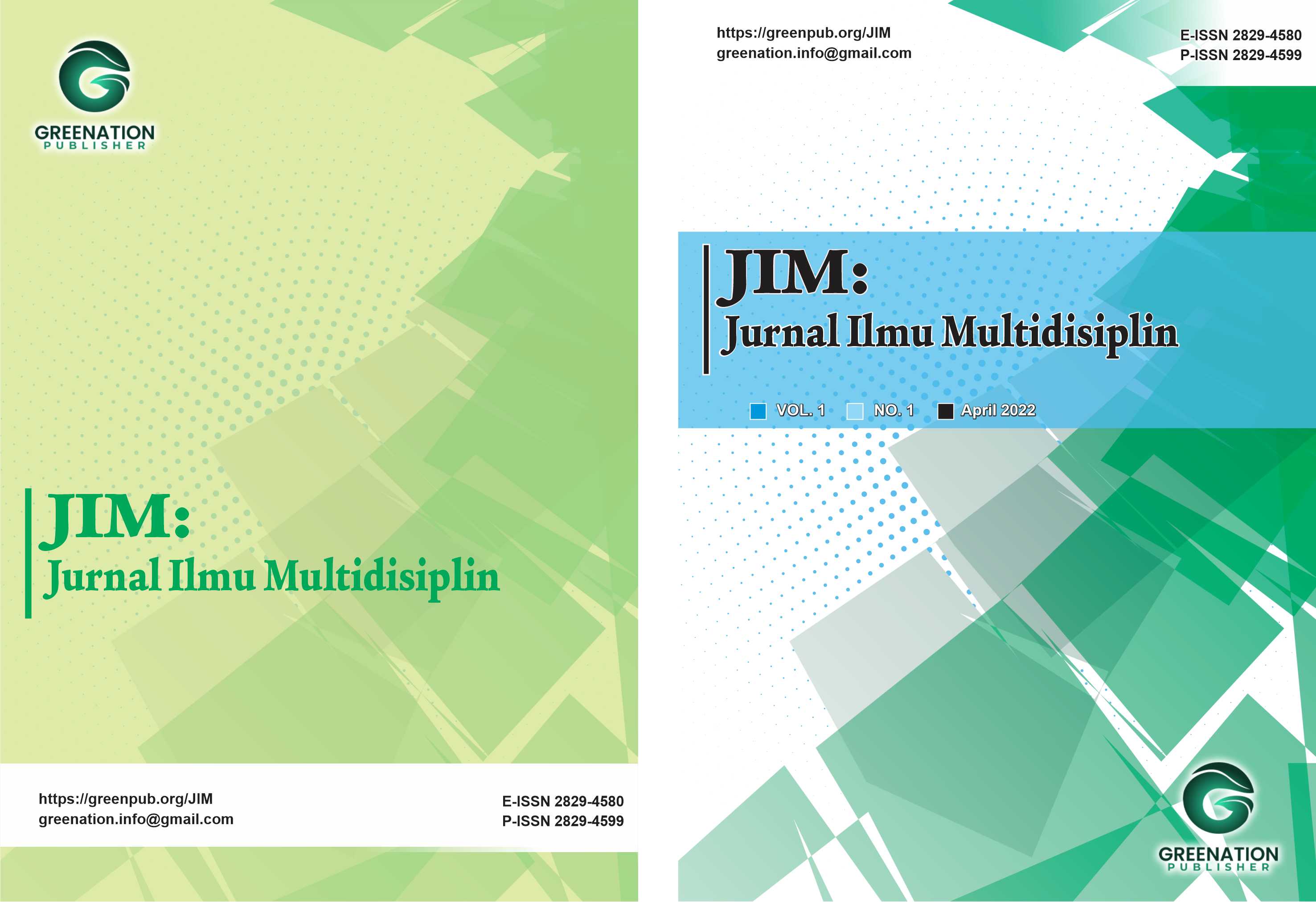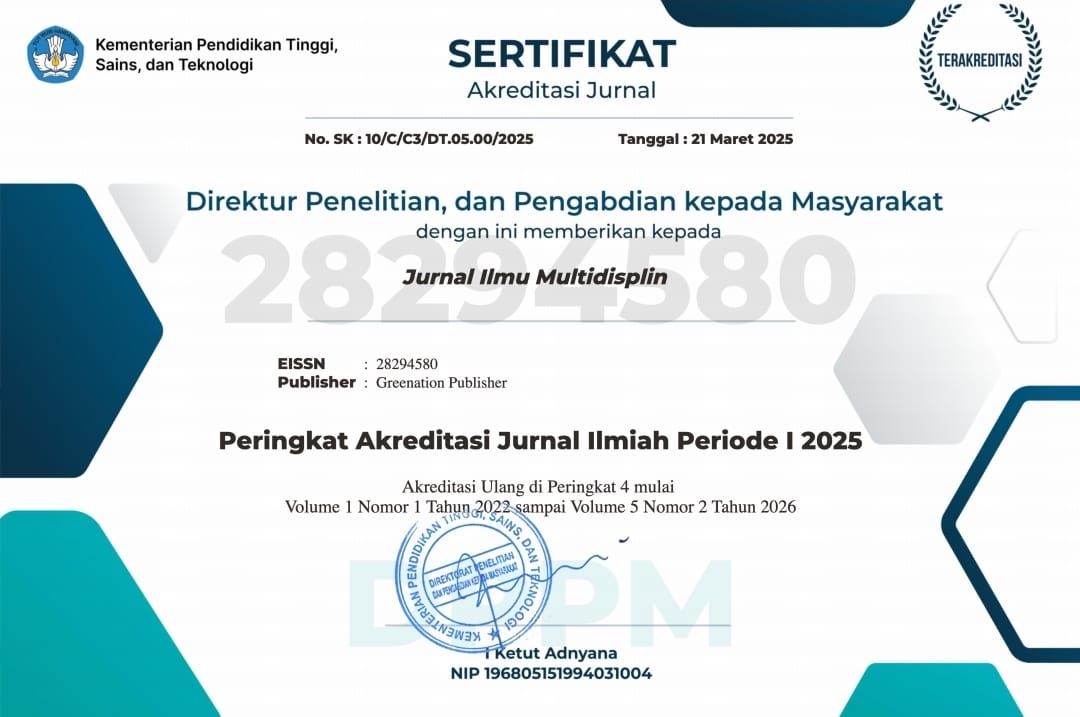Memanfaatkan Analisis Sentimen Twitter untuk Mengelola Reputasi Merek: Studi Kasus Skincare Merek X Menggunakan Support Vector Machine
DOI:
https://doi.org/10.38035/jim.v4i3.1196Keywords:
Reputasi Merek, Pemrosesan Bahasa Alami, Analisis Sentimen, Support Vector Machine, SkincareAbstract
Penelitian ini mengevaluasi reputasi Merek X dengan menganalisis 2.646 tweet dari Oktober 2023 hingga Maret 2024 menggunakan natural language processing (NLP) dan Support Vector Machine (SVM). Penelitian ini bertujuan untuk menilai sentimen konsumen terhadap Merek X, mengidentifikasi faktor-faktor utama yang mempengaruhi sentimen, serta mengukur distribusi data, dan keefektifan algoritma svm. Hasil penelitian menunjukkan bahwa 69% dari sentimen adalah positif, 18,2% negatif, dan 12,8% netral, dengan model SVM mencapai akurasi 83%. Faktor-faktor seperti kecocokan produk, harga, kualitas, dan inovasi ditemukan secara signifikan mempengaruhi sentimen. Temuan ini menunjukkan bahwa Merek X dapat meningkatkan kepuasan pelanggan dan menyempurnakan strategi pemasarannya untuk memperkuat posisi pasarnya.
References
Amini, T. A., & Setiawan, K. (2024). Application of the naive bayes algorithm in twitter sentiment analysis of 2024 vice presidential candidate Gibran Rakabuming Raka using rapidminer. International Journal Software Engineering and Computer Science, 4(1), 234–246. https://doi.org/10.35870/ijsecs.v4i1.2236
Ben-Hur, A., & Weston, J. (2010). A user’s guide to support vector machines. In O. Carugo & F. Eisenhaber (Eds.), Data Mining Techniques for the Life Sciences (Vol. 609, pp. 223–239). Humana Press. https://doi.org/10.1007/978-1-60327-241-4_13
Boumhidi, A., Benlahbib, A., & Nfaoui, E. H. (2022). Cross-platform reputation generation system based on aspect-based sentiment analysis. IEEE Access, 10, 2515–2531. https://doi.org/10.1109/ACCESS.2021.3139956
Chakraborty, S., Sadhukhan, S., Bhar, A., & Ghosh, M. (2023). Sentiment analysis in the perspective of natural language processing. International Journal for Research in Applied Science and Engineering Technology, 11(11), 2235–2241. https://doi.org/10.22214/ijraset.2023.56925
Cortes, C., & Vapnik, V. (1995). Support-vector networks editor. Machine Learning, 20(3), 273–297. https://doi.org/10.1007/BF00994018
Dami, S., & Alimardani, R. (2024). An aspect-level sentiment analysis based on lda topic modeling. Journal of Information Systems and Telecommunication, 12(2), 117–126. https://doi.org/10.61186/jist.38104.12.46.117
Das, M., Kamalanathan, S., & Alphonse, P. J. A. (2021). A comparative study on TF-IDF feature weighting method and its analysis using unstructured dataset. COLINS 2021: Proceedings of the 5th International Conference. April 22-23, 2021., 2870, 98–107. https://doi.org/10.48550/arXiv.2308.04037
Dubey, T., & Jain, A. (2019). Sentiment analysis of keenly intellective smart phone product review utilizing svm classification technique. ICCCNT 2019: Proceedings of the 10th International Conference on Computing, Communication and Networking Technologies. July 06-08, 2019, 1–8. https://doi.org/10.1109/ICCCNT45670.2019.8944795
Fadlil, A., Riadi, I., & Andrianto, F. (2024). Improving sentiment analysis in digital marketplaces through svm kernel fine-tuning. International Journal of Computing and Digital Systems, 16(1), 159–171. https://doi.org/10.12785/ijcds/160113
Fatmawati, I., & Fauzan, N. (2021). Building customer trust through corporate social responsibility: the effects of corporate reputation and word of mouth. Journal of Asian Finance, Economics and Business, 8(3), 0793–0805. https://doi.org/10.13106/jafeb.2021.vol8.no3.0793
Fournier, S., & Srinivasan, S. (2023). Monitoring marketing sources of brand reputation risk. NIM Marketing Intelligence Review, 15(1), 46–53. https://doi.org/10.2478/nimmir-2023-0007
Ganga, B. M., Meghana, K. S., Raykar, S. S., Spandana, M. K., & Vinutha, V. (2022). Sentimental analysis on cosmetics using machine learning. ACS Journal for Science and Engineering, 2(2), 11–29. https://doi.org/10.34293/acsjse.v2i2.31
Imanuddin, S. H., Adi, K., & Gernowo, R. (2023). Sentiment analysis on satusehat application using support vector machine method. Journal of Electronics, Electromedical Engineering, and Medical Informatics, 5(3), 143–149. https://doi.org/10.35882/jeemi.v5i3.304
Jain, R., Rai, R. S., Jain, S., Ahluwalia, R., & Gupta, J. (2023). Real time sentiment analysis of natural language using multimedia input. Multimedia Tools and Applications, 82(26), 41021–41036. https://doi.org/10.1007/s11042-023-15213-3
Jannah, N. Z. B., & Kusnawi, K. (2024). Comparison of naïve bayes and svm in sentiment analysis of product reviews on marketplaces. Sinkron, 8(2), 727–733. https://doi.org/10.33395/sinkron.v8i2.13559
Kavyasri, G., Keerthana, D., Keerthana, K., Reddy, K. B., Keerthi, K., Aditya, K. J., & Arivazhagan, D. (2023). Margin maximization of text classification based on support vector machine. International Journal for Research in Applied Science & Engineering Technology, 11(12), 2321–9653. https://doi.org/10.22214/ijraset.2023.57420
Kayaku?, M., Açikgöz, F. Y., Dinca, M. N., & Kabas, O. (2024). Sustainable brand reputation: evaluation of iPhone customer reviews with machine learning and sentiment analysis. Sustainability, 16(14), 6121. https://doi.org/10.3390/su16146121
Khuspe, A., Gaikwad, T., Sarkar, A., Wyawahare, M., Kumari, A., & Chopde, A. (2024). Sentiment analysis on twitter through machine learning: a comprehensive approach with user-centric visualisations. International Journal of Innovative Science and Research Technology, 9(4), 2066–2073. https://doi.org/10.38124/ijisrt/ijisrt24apr227
Lin, L. L.-C., Yang, G.-H., Wang, Y.-T., Anggarina, P. T., & Irawan, A. P. (2023). The impact of brand reputation and marketing tools on purchasing intentions -care products as an example. International Journal of Application on Economics and Business, 1(3), 1557–1564. https://doi.org/10.24912/ijaeb.v1i3.1557-1564
Maiti, A., Abarda, A., & Hanini, M. (2024). The impact of feature extraction techniques on the performance of text data classification models. Indonesian Journal of Electrical Engineering and Computer Science, 35(2), 1041–1052. https://doi.org/10.11591/ijeecs.v35.i2.pp1041-1052
Makhtum, A. R., & Muhajir, M. (2023). Sentiment analysis of omnibus law using support vector machine (svm) with linear kernel. BAREKENG: Jurnal Ilmu Matematika Dan Terapan, 17(4), 2197–2206. https://doi.org/10.30598/barekengvol17iss4pp2197-2206
Mamuaya, N. C. (2024). Investigating the impact of product quality, price sensitivity, and brand reputation on consumer purchase intentions in the FMCG sector. International Journal of Business, Law, and Education, 5(2), 1576–1583. https://doi.org/10.56442/ijble.v5i2.614
Manimegalai, D., & Srinivas, V. V. (2023). Sentiment analysis on the brand recall of twitter data with the tool of NCSU tweet sentiment visualization. International Journal of Research in Marketing Management and Sales, 5(1), 48–53. https://doi.org/10.33545/26633329.2023.v5.i1a.121
Mariutti, F. G., & Giraldi, J. de M. E. (2020). Country brand equity: the role of image and reputation. BAR - Brazilian Administration Review, 17(3), 1–24. https://doi.org/10.1590/1807-7692bar2020180128
Mohammad, R., Movafegh, A., & Fotoohi, H. (2015). Brand reputation and costumer trust. Arabian Journal of Business and Management Review, 5(2), 48–52. https://doi.org/10.12816/0019012
Mostaghel, R., Oghazi, P., Patel, P. C., Parida, V., & Hultman, M. (2019). Marketing and supply chain coordination and intelligence quality: A product innovation performance perspective. Journal of Business Research, 101, 597–606. https://doi.org/10.1016/j.jbusres.2019.02.058
Mutia, A. (2022, December 5). Beauty and personal care product revenue in indonesia to reach IDR111.83 trillion by 2022. databoks.katadata.co.id. https://databoks.katadata.co.id/datapublish/2022/12/05/makin-meroket-pendapatan-produk-kecantikan-dan-perawatan-diri-di-ri-capai-rp11183-triliun-pada-2022
Olaleye, S. A., Sanusi, I. T., & Salo, J. (2018). Sentiment analysis of social commerce: A harbinger of online reputation management. International Journal of Electronic Business, 14(2), 85–102. https://doi.org/10.1504/IJEB.2018.094864
Purba, J. T., Budiono, S., & Rajagukguk, W. (2022, April 5). Performance of collaboration social media marketing and product quality on local brand loyalty of coffee shop for revisit intention. Paper Presented at the 3rd African International Conference. Industrial Engineering and Operations Management. April 5-7, 2022. https://doi.org/10.46254/AF03.20220081
Qaiser, S., Yusoff, N., Ali, R., Remli, M. A., & Adli, H. K. (2021). A comparison of machine learning techniques for sentiment analysis. Turkish Journal of Computer and Mathematics Education, 12(3), 1738–1744. https://doi.org/10.17762/turcomat.v12i3.999
Rahmawati, Fuadi, W., & Afrillia, Y. (2024). Cosmetic shop sentiment analysis on tiktok shop using the support vector machine method. International Journal of Engineering, Science & InformationTechnology, 4(2), 31–37. https://doi.org/10.52088/ijesty.v4i1.498
Rimpy, Dhankhar, A., & Dhankhar, A. (2024). Sentimental analysis of social networks: A comprehensive review (2018-2023). Multidisciplinary Reviews, 7(7), 2024126. https://doi.org/10.31893/multirev.2024126
Saragih, H., & Manurung, J. (2024). Leveraging the BERT model for enhanced sentiment analysis in multicontextual social media content. Jurnal Teknik Informatika C.I.T Medicom, 16(2), 82–89. https://doi.org/10.35335/cit.vol16.2024.766.pp82-89
Singh, A., & Banerjee, S. (2024). A review of: ensemble feature selection scheme-based performance evaluation of several classifiers for sentiment analysis. International Journal for Research in Applied Science and Engineering Technology, 12(6), 1833–1840. https://doi.org/10.22214/ijraset.2024.63404
Singh, N., & Jaiswal, U. C. (2023). A detailed sentiment analysis survey based on machine learning techniques. Advances in Distributed Computing and Artificial Intelligence Journal, 12(1), e29105. https://doi.org/10.14201/adcaij.29105
Starbuck, C. (2023). Data preparation. In The Fundamentals of People Analytics (1st ed., pp. 79–95). Springer International Publishing. https://doi.org/10.1007/978-3-031-28674-2_6
statista. (2023, October). Skin care: market data & analysis. Skin care - Indonesia. Statista.Com. https://www.statista.com/outlook/cmo/beauty-personal-care/skin-care/indonesia
Stravinskiene, J., Matuleviciene, M., & Hopeniene, R. (2021). Impact of corporate reputation dimensions on consumer trust. Inzinerine Ekonomika-Engineering Economics, 32(2), 177–192. https://doi.org/10.5755/j01.ee.32.2.27548
Sudhakaran, P., & Jaiganesh, M. (2020). Sentiment analysis based product selection for enhancing e-commerce. International Journal of Innovative Technology and Exploring Engineering, 9(3S), 389–394. https://doi.org/10.35940/ijitee.c1083.0193s20
Suryawanshi, N. S. (2024). Sentiment analysis with machine learning and deep learning: A survey of techniques and applications. International Journal of Science and Research Archive, 12(2), 005–015. https://doi.org/10.30574/ijsra.2024.12.2.1205
Tellawar, A., Wattamwar, S., & Thorat, B. (2023). Online fake review detection using svm. International Journal for Research in Applied Science and Engineering Technology, 11(5), 2006–2008. https://doi.org/10.22214/ijraset.2023.51925
Tembhurne, J. V, Agrawal, A., & Lakhotia, K. (2024). Covid-19 twitter sentiment classification using hybrid deep learning model based on grid search methodology. ArXiv, 2406.10266. https://doi.org/10.48550/arxiv.2406.10266
Traore, N. (2024). Impact of online reviews on brand reputation and customer purchase behaviors in online retail market. International Journal of Innovative Research in Multidisciplinary Education, 03(03), 381–383. https://doi.org/10.58806/ijirme.2024.v3i3n17
Vaibhavi, S. S., Devadathan, R., Inbamala, T. A., Susmita, P., Supritha, R., Sanjayan, J., & Bhuvana, J. (2024). A Study And Development Of Application On Sentiment Analysis. International Scientific Journal of Engineering and Management, 03(03), 1–7. https://doi.org/10.55041/isjem01354
Waluyo, D., Nuraini, R., & Sari, E. I. (2023, November 3). Beautiful phenomenon of the cosmetic industry. Indonesia.Go.Id. https://indonesia.go.id/kategori/editorial/7804/beautiful-phenomenon-of-the-cosmetic-industry?lang=2
Xi, R. (2024). A comprehensive review of text sentiment analysis: a survey of traditional methods and deep learning approaches. Science and Technology of Engineering, Chemistry and Environmental Protection, 1(5), TE000412. https://doi.org/10.61173/7wthqa25
Xiao, H., & Luo, L. (2024). An automatic sentiment analysis method for short texts based on transformer-BERT hybrid model. IEEE Access, 12, 93305–93317. https://doi.org/10.1109/ACCESS.2024.3422268
ZAP Clinic, & MarkPlus. (2024, January 30). Zap beauty index 2024 dan men/o/logy index. Zapclinic.Com. https://zapclinic.com/files/ZAP_Beauty_Index_2024.pdf
Zhan, T., Shi, C., Shi, Y., Li, H., & Lin, Y. (2024). Optimization techniques for sentiment analysis based on LLM (GPT-3). Applied and Computational Engineering, 77, 252–257. https://doi.org/10.54254/2755-2721/67/2024MA0060
Zheng, D. (2024). Sentiment analysis for film reviews based on random forest. Science and Technology of Engineering, Chemistry and Environmental Protection, 1(7), TE001562. https://doi.org/10.61173/5t8epb44
Downloads
Published
How to Cite
Issue
Section
License
Copyright (c) 2025 Muhammad Wildan Agba, Puspa Eosina, Dewi Primasari

This work is licensed under a Creative Commons Attribution 4.0 International License.
You are free to:
- Share— copy and redistribute the material in any medium or format
- Adapt— remix, transform, and build upon the material for any purpose, even commercially.
The licensor cannot revoke these freedoms as long as you follow the license terms.
Under the following terms:
- Attribution— You must give appropriate credit, provide a link to the license, and indicate if changes were made. You may do so in any reasonable manner, but not in any way that suggests the licensor endorses you or your use.
- No additional restrictions— You may not apply legal terms or technological measures that legally restrict others from doing anything the license permits.
Notices:
- You do not have to comply with the license for elements of the material in the public domain or where your use is permitted by an applicable exception or limitation.
- No warranties are given. The license may not give you all of the permissions necessary for your intended use. For example, other rights such as publicity, privacy, or moral rightsmay limit how you use the material.




























